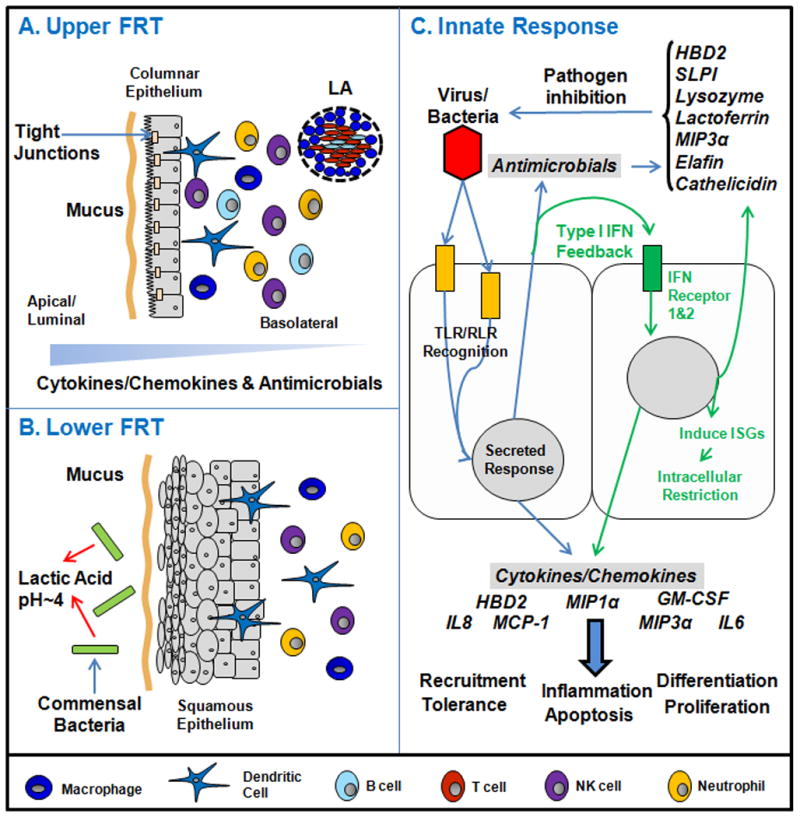Figure 1.

Schematic of the major components of the mucosal innate immune system in the human female reproductive tract (female reproductive tract). Panel A: The upper female reproductive tract, consisting of the Fallopian tubes, uterine endometrium and endocervix is lined by a single layer of columnar epithelial cells linked by tight junctions. Overlying the cells is a protective mucus layer (Section 2). Secretion is generally preferential towards the apical/luminal compartment with a gradient across the epithelial layer from lumen to tissue. Underlying the epithelial cells are innate and adaptive immune cells (Section 3). Also shown are lymphoid aggregates (LA) that are unique to the uterus. Panel B: The lower female reproductive tract, consisting of the ectocervix and vagina is covered by a layer of stratified squamous epithelial cells (Sections 2 and 3). Similar to the upper female reproductive tract, epithelial cells are protected by a mucus layer. The lower female reproductive tract has a resident commensal bacterial population that produces lactic acid thus lowering vaginal pH (Section 2). Below the epithelial layer are innate and adaptive immune cells. Panel C: The innate immune response of upper female reproductive tract epithelial cells to an invading pathogen. Epithelial cells express a panel of Toll-like receptors (TLRs) and RIG-like receptors (RLRs) that allow them to recognize and respond to bacteria or viruses. The Type I Interferon (IFN) response (green arrows, middle section of panel C) is a potent defense system in female reproductive tract cells (Sections 4 and 5). Additionally, in response to pathogens and sex hormones, antimicrobials and cytokines/chemokines are secreted to confer broad spectrum protection.
